Table of Contents
Transportation in Animals
Transportation is an important life process by which substances are moved within an organism’s body to support essential biological processes. This process is necessary for the efficient distribution of nutrients, oxygen and other essential substances required for the organism’s growth and survival.
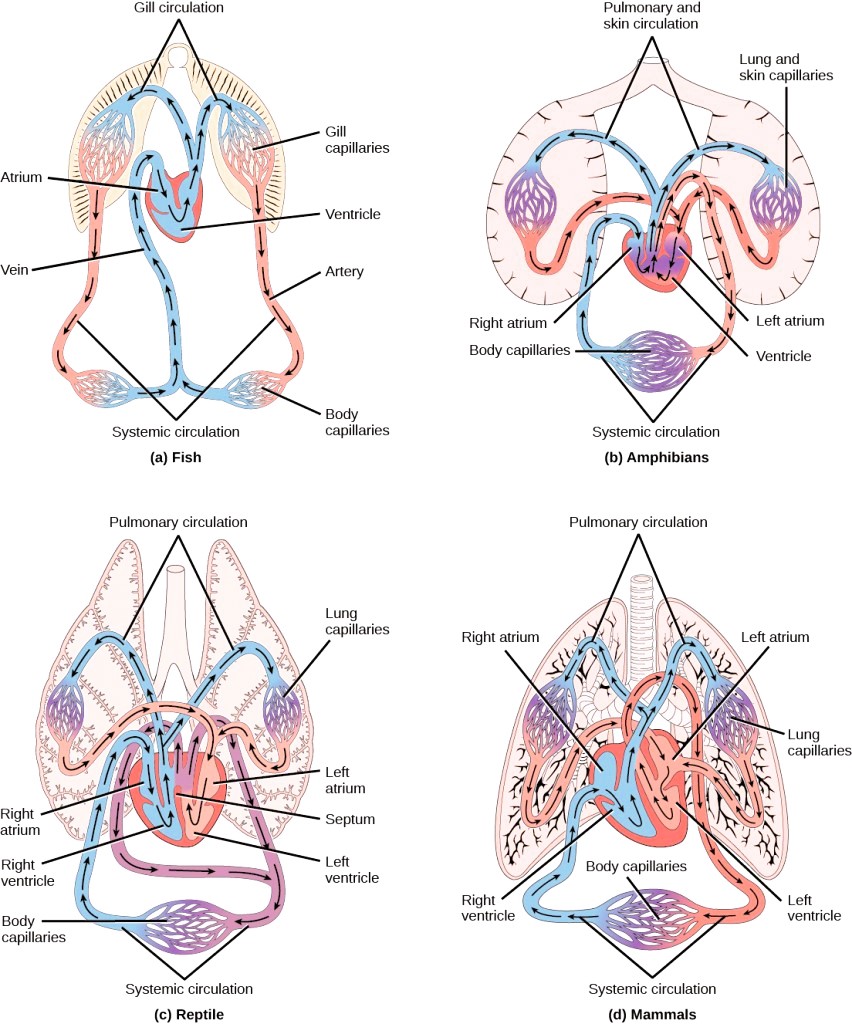
In addition to carrying essential substances, Transportation also involves the removal of waste materials or excretory products from the body. In animals, the Circulatory System plays a significant role in the Transportation process by circulating Blood throughout the body, allowing for the distribution of necessary substances and removal of waste products.
Transportation System or Circulatory System in Amphibians
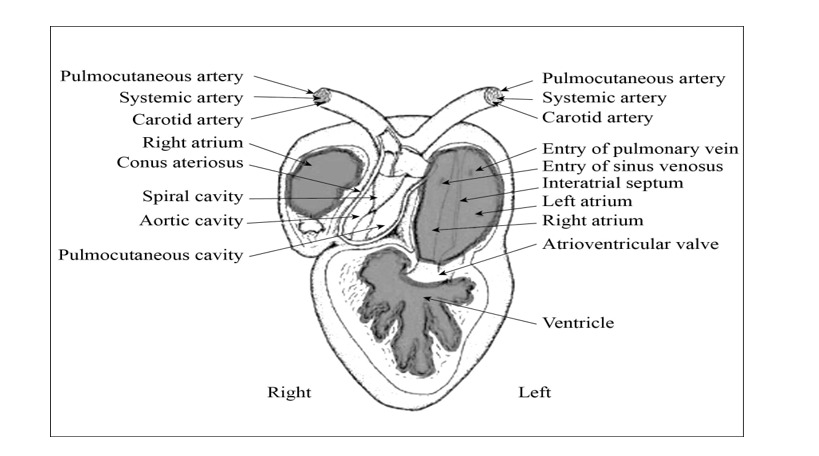
- The Heart in Amphibians is a three-chambered organ consisting of two atria and one ventricle.
- Blood flows from the body into the right atrium, then to the ventricle, where it is pumped out to the lungs for oxygenation.
- From the lungs, oxygenated Blood returns to the left atrium and then to the ventricle, which pumps it out to the rest of the body.
- The Blood Vessels in Amphibians consist of Arteries, Veins and Capillaries. Arteries carry oxygenated Blood away from the Heart and towards the body, while Veins carry deoxygenated Blood back to the Heart. Capillaries are tiny Blood Vessels that connect Arteries and Veins, allowing for the exchange of oxygen and nutrients with body tissues.
- The Transportation System in Amphibians is adapted to their semi-aquatic lifestyle. For example- the skin of Amphibians is permeable to water and gases, allowing for gas exchange to occur through the skin as well as the lungs. This is particularly important for Amphibians that spend a lot of time in water, as they can absorb oxygen directly from the water through their skin.
- Some species of Amphibians have a special circulatory adaptation known as cutaneous respiration. This involves the use of specialised Blood Vessels in the skin to absorb oxygen directly from the environment. This is particularly important for Amphibians that live in areas with low oxygen levels, such as stagnant ponds or swamps.
Also Check- Difference between Double Circulation and Single Circulation
Transportation System or Circulatory System in Reptiles
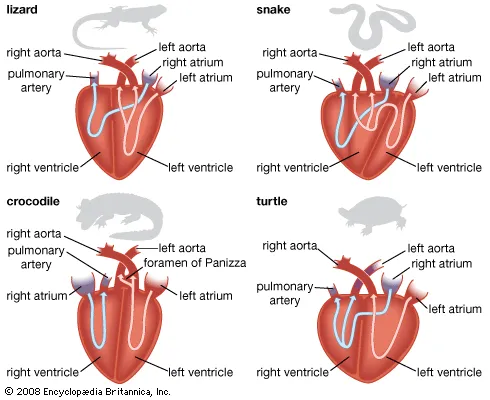
- The heart in reptiles is similar to that of Amphibians in that it is a three-chambered organ consisting of two Atria and one Ventricle. However in some species of reptiles such as Crocodiles and Alligators the heart is four-chambered, with a complete separation between oxygenated and deoxygenated Blood.
- Blood flows from the body into the right atrium, then to the ventricle, where it is pumped out to the lungs for oxygenation. From the lungs, oxygenated Blood returns to the left atrium and then to the ventricle, which pumps it out to the rest of the body.
- The Blood Vessels in reptiles consist of Arteries, Veins and Capillaries. Arteries carry oxygenated Blood away from the heart and towards the body, while Veins carry deoxygenated Blood back to the heart. Capillaries are tiny Blood Vessels that connect Arteries and Veins, allowing for the exchange of oxygen and nutrients with body tissues.
- One notable adaptation of the Circulatory System in reptiles is their ability to regulate their body temperature. Reptiles are ectothermic, meaning they rely on external sources of heat to regulate their body temperature.
- One important adaptation of the Circulatory System in reptiles is the development of the pulmonary circuit. This involves the separation of the pulmonary and systemic circulations, allowing for efficient oxygenation of the Blood.
- In reptiles, the pulmonary circuit is separate from the systemic circuit, meaning that oxygenated Blood from the lungs does not mix with deoxygenated Blood from the body.
- The Circulatory System in reptiles is designed to help them do this by controlling the flow of Blood to different parts of the body. For example- when a reptile is basking in the sun, the Blood Vessels in its skin dilate allowing more Blood to flow to the skin and absorb heat. Conversely, when a reptile is cold the Blood Vessels in its skin constrict, reducing Blood flow and conserving heat.
- Another adaptation of the Circulatory System in reptiles is the presence of a renal portal system. This is a specialised network of Blood Vessels that allows Blood from the hindlimbs and tail to pass through the kidneys before returning to the heart.
- This system helps to filter waste products from the Blood and maintain proper electrolyte balance in the body.
Also Check – Transportation in Plants
Transportation System or Circulatory System in Birds
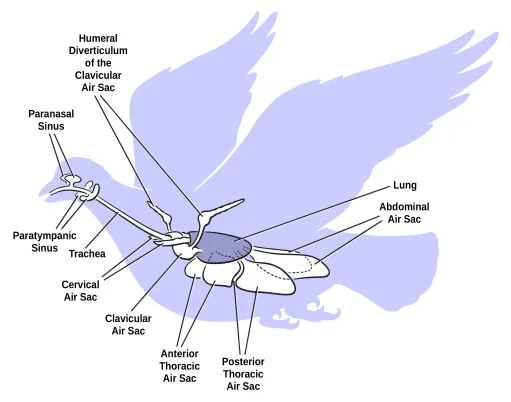
- The Heart in birds is a four-chambered organ that is divided into two atria and two ventricles. The right atrium receives deoxygenated Blood from the body and pumps it into the right ventricle, which then pumps the Blood to the lungs for oxygenation.
- Oxygenated Blood returns to the left atrium and is then pumped by the left ventricle out to the body.
- The Blood Vessels in birds consist of Arteries, Veins and Capillaries. Arteries carry oxygenated Blood away from the Heart and towards the body, while Veins carry deoxygenated Blood back to the Heart. Capillaries are tiny Blood Vessels that connect Arteries and Veins, allowing for the exchange of oxygen and nutrients with body tissues.
- The Transportation System in birds is adapted to their high metabolism and need for efficient oxygen Transport.
- Birds have a much higher Heart rate and Blood flow than mammals of a similar size, which allows for rapid delivery of oxygen to tissues.
- Birds have a unique respiratory system that involves the use of air sacs. These air sacs are connected to the lungs and help regulate the flow of air through the respiratory system. This allows for a continuous supply of fresh air to the lungs and improves the efficiency of oxygen exchange.
- Another adaptation of the Circulatory System in birds is the presence of a high number of red Blood cells. This allows for a greater capacity for oxygen Transport and helps meet the high metabolic demands of flight.
Also Check – Transportation in Human beings
Also Check- Double Circulation -Definition, 2 Loops, Flowchart,Types, Importance
Transportation System or Circulatory System in mammals
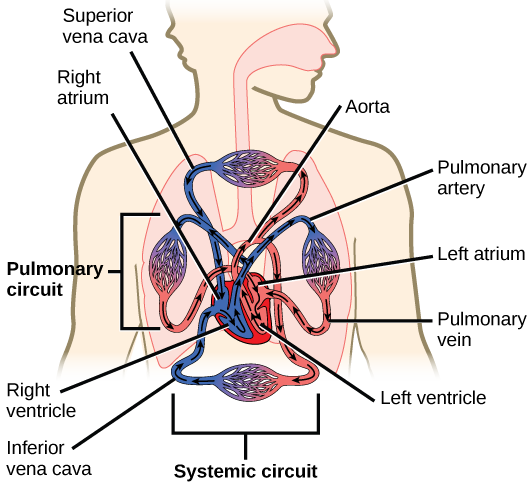
- The Heart in mammals is a four-chambered organ that is divided into two atria and two ventricles. The right atrium receives deoxygenated Blood from the body and pumps it into the right ventricle, which then pumps the Blood to the lungs for oxygenation. Oxygenated Blood returns to the left atrium and is then pumped by the left ventricle out to the body.
- The Blood Vessels in mammals consist of Arteries, Veins and Capillaries. Arteries carry oxygenated Blood away from the Heart and towards the body, while Veins carry deoxygenated Blood back to the Heart. Capillaries are tiny Blood Vessels that connect Arteries and Veins, allowing for the exchange of oxygen and nutrients with body tissues.
- The Transportation System in mammals is adapted to their warm-Blooded or endothermic, lifestyle. Mammals generate heat internally, which requires a higher metabolic rate and a more efficient Circulatory System. Mammals have a higher Blood flow than Reptileand a more efficient oxygen Transport system.
- Another adaptation of the Circulatory System in mammals is the presence of a pulmonary and systemic circulation. Pulmonary circulation involves the Transport of deoxygenated Blood from the Heart to the lungs for oxygenation, while systemic circulation involves the Transport of oxygenated Blood to the body. This separation of circulations allows for a more efficient oxygen Transport system.
- Mammals also have a variety of specialised Blood cells- Red Blood cells, White Blood cells and Platelets. Red Blood cells are responsible for carrying oxygen throughout the body, while White Blood cells are involved in the immune response. Platelets are involved in Blood clotting.
Also Check – Why is it necessary to separate Oxygenated and Deoxygenated Blood ?
Transportation System or Circulatory System in Fishes
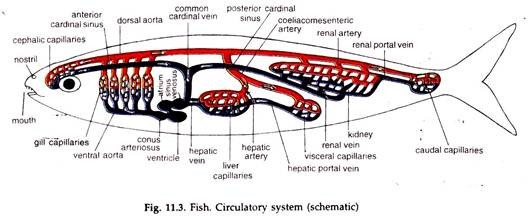
- The Heart in Fishes is a two-chambered organ that is divided into a single atrium and a single ventricle. The Heart pumps Blood in a single circuit, from the gills to the body and back to the Heart. The Blood is not completely separated into oxygenated and deoxygenated Blood, as in mammals and birds, but rather mixed in the Heart.
- The Blood Vessels in Fishes consist of Arteries, Veins and Capillaries. Arteries carry oxygenated Blood away from the Heart and towards the body, while Veins carry deoxygenated Blood back to the Heart. Capillaries are tiny Blood Vessels that connect Arteries and Veins, allowing for the exchange of oxygen and nutrients with body tissues.
- The Transportation System in Fishes is adapted to their aquatic lifestyle.
- Fishes extract oxygen from the water through their gills and their Circulatory System is designed to deliver oxygen to tissues efficiently.
- Fishes have a highly branched system of Capillaries in their gills which allows for a large surface area for oxygen exchange.
- Another adaptation of the Circulatory System in Fishes is the presence of a swim bladder. The swim bladder is a gas-filled sac that helps regulate buoyancy in the water. It is connected to the Circulatory System and can be used to increase or decrease the Fish’s density allowing it to move up or down in the water column.
- Fish also have a variety of specialised Blood cells like red Blood cells, white Blood cells and thrombocytes.
- Red Blood cells in Fish contain haemoglobin which is responsible for carrying oxygen throughout the body. Thrombocytes are involved in Blood clotting, while white Blood cells are involved in the immune response.
Frequently asked Questions on Transportation in Animals
What is the purpose of Transportation in Animals?
Answer – The purpose of Transportation in Animals is to move substances such as nutrients, oxygen and waste materials within an organism’s body to support essential biological processes.
What role does the Circulatory System play in the Transportation process?
Answer – The Circulatory System plays a significant role in the Transportation process by circulating blood throughout the body, allowing for the distribution of necessary substances and removal of waste products.
What is the structure of the Heart in Amphibians?
Answer – The Heart in Amphibians is a three-chambered organ consisting of two atria and one ventricle.
How does gas exchange occur in the skin of Amphibians?
Answer – The skin of Amphibians is permeable to water and gases, allowing for gas exchange to occur through the skin as well as the lungs.
What is cutaneous respiration in Amphibians?
Answer – Cutaneous respiration is a Circulatory adaptation seen in some species of Amphibians that involves the use of specialised blood vessels in the skin to absorb oxygen directly from the environment.
What is the main adaptation of the Circulatory System in Reptiles?
Answer – The main adaptation of the Circulatory System in Reptiles is the development of the pulmonary circuit that involves the separation of the pulmonary and systemic circulations, allowing for efficient oxygenation of the blood.
How do Reptiles regulate their body temperature?
Answer – Reptiles regulate their body temperature by relying on external sources of heat, as they are ectothermic.
What is the function of the renal portal system in Reptiles?
Answer – The renal portal system is a specialised network of blood vessels in Reptiles that allows blood from the hindlimbs and tail to pass through the kidneys before returning to the Heart, helping to filter waste products from the blood and maintain proper electrolyte balance in the body.
What is the structure of the Heart in Birds?
Answer – The Heart in Birds is a four-chambered organ that is divided into two atria and two ventricles.
How does the Circulatory System in Birds work to transport oxygen?
Answer – The Circulatory System in Birds works to transport oxygen by pumping deoxygenated blood from the body to the lungs, where it is oxygenated and then returning the oxygenated blood back to the body for distribution.

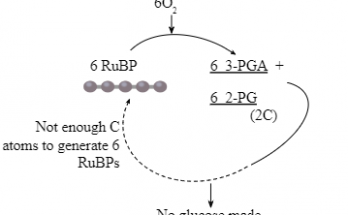
3 Comments on “Transportation in Animals -Class 10 Notes”